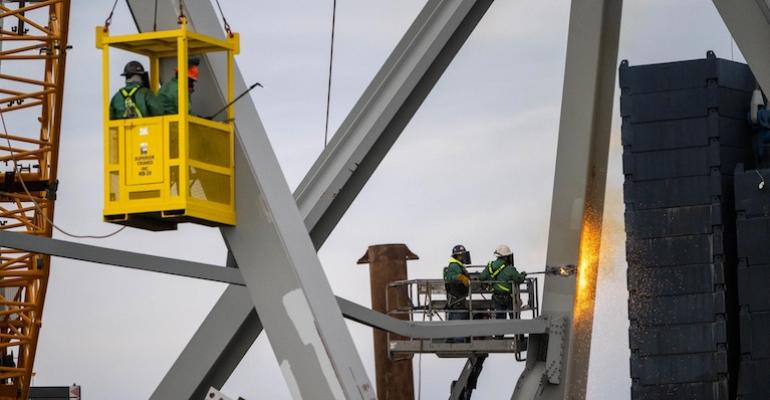Key Bridge Response 2024 Unified Command said the Captain of the Port was preparing establish the temporary channel to the Northeast side of the main channel that connects to the Port of Baltimore.
The temporary channel would have depth of 11 feet, a 264-foot horizontal clearance, and vertical clearance 96 feet. With a depth of 11 feet the port would remain closed to large commercial vessels.
“This will mark an important first step along the road to re-opening the port of Baltimore,” said Capt. David O’Connell, Federal On-Scene Coordinator, Key Bridge Response 2024. “By opening this alternate route, we will support the flow of marine traffic into Baltimore.”
The current 2,000-yard safety zone around the Francis Scott Key Bridge remains in effect.
Meanwhile salvors are working to remove wreckage of the bridge that collapsed last week after it was struck by the container ship Dali.
Unified command said two crane barges, a 650-ton crane and a 330-ton crane were working on the scene as demolition crews continued to cut portions of the north side of the collapsed bridge truss.
Meanwhile three dive teams were surveying sections of the bridge and the container vessel Dali for future removal operations.
Copyright © 2024. All rights reserved. Seatrade, a trading name of Informa Markets (UK) Limited.
Add Seatrade Maritime News to your Google News feed.  |

